Is Your Office Drowning in Paper? The Real Estate Cost of Document Storage
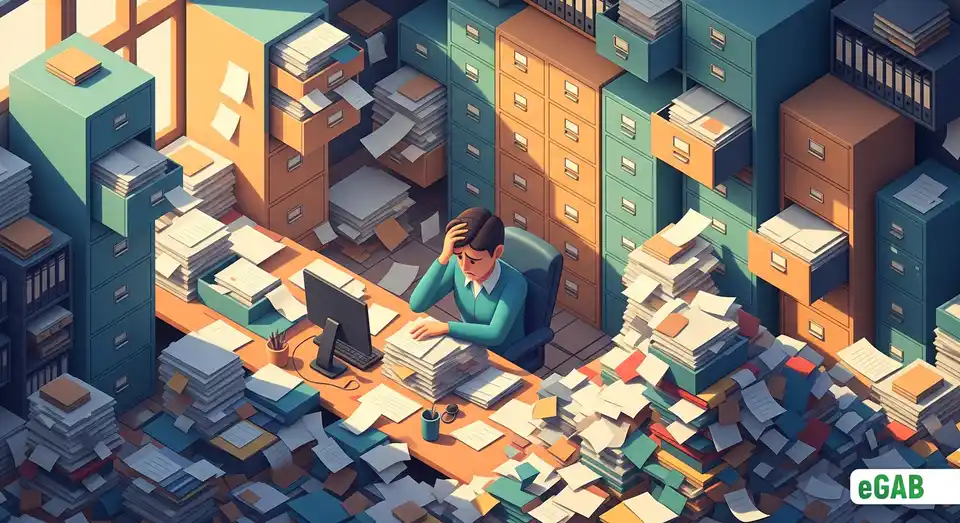
 Author:
Artem Grigoriev
Author:
Artem Grigoriev
- How Much Valuable Office Space Do Your Filing Cabinets Consume?
- Are Off-Site Storage Facilities a Cheaper Alternative?
- What Are the Hidden Equipment and Supply Costs?
- How to Calculate Your Total Annual Cost of Paper Storage
- How eGAB Eliminates the Real Estate Footprint of Document Archives
- Summary: Exposing the True Financial Drain of Your Filing Cabinets
Have you ever really stopped to think about those rows of filing cabinets? What are they actually costing your business in terms of both money and critical data security risks? It’s a quiet, creeping expense, and it goes way beyond the simple price of paper and folders. You're already paying for rent, utilities, and maintenance for your people, but you're also paying for your paper archives. This means you’re turning your prime commercial real estate into a very expensive warehouse. The real financial hit here is the real estate cost of document storage . It's a huge part of the total cost of ownership (TCO) for every document you file away, and frankly, the final number can be shocking. In this article, we’ll walk you through exactly how to calculate document storage cost accurately. We'll help you uncover all the hidden expenses, from cabinet footprints to lost productivity. Ultimately, our goal is to help you build a powerful and convincing business case for going paperless .
📘 This post is part of our comprehensive guide to "The Problems with Paper Documents: A Complete Guide". Explore it to find answers to all your questions ;)
How Much Valuable Office Space Do Your Filing Cabinets Consume?
Take a moment and walk through your office. What do you really see? Beyond the desks and collaboration areas, do you have endless rows of filing cabinets lining the walls? It's a familiar sight for most businesses. But have you ever stopped to calculate what that paper actually costs you? We're not just talking about the price of paper-we're talking about the total cost of ownership (the full expense of buying, using, and maintaining something), and it's pretty shocking. So, what is the total cost of ownership for a filing cabinet when you add it all up? You might be surprised to learn that many organizations dedicate a huge amount of their commercial real estate just to document archives. For some older, legacy-heavy businesses , that number can climb as high as a staggering 50-70% . You're essentially turning your prime real estate into a very expensive paper warehouse.
Let's break that down with real-world numbers to see the impact. A standard 5-drawer filing cabinet seems to have a small footprint of only about 7 square feet. But honestly, that number is misleading. For an employee to actually use the cabinet, they need enough room to open the drawers and access the files. In reality, this means you need up to 15 square feet of usable office space just for clearance. The actual square footage it eats up is more than double the cabinet's base. According to a recent Cushman & Wakefield's National Office Report , average U.S. office rents are currently hovering around $38.50 per square foot annually . So, what does this mean for your budget? The physical space for just one of those cabinets can easily cost you over $577 every single year -in rent alone. This is the core of the office space cost for filing cabinets that so many businesses overlook.
This isn't just another line item on an expense report; it's a massive opportunity cost -the value you lose by choosing one option over another. Think about it. That same floor space could be used for something that actually makes you money, like a workstation for a new hire, a dedicated client meeting room, or a dynamic innovation hub . So, how do you calculate the real estate cost of document storage accurately? Here's a staggering thought: storing just 21 filing cabinets can easily eat up over 300 square feet of your office. That space, which is enough to comfortably fit an entire collaborative team, could be costing you more than $12,000 annually in real estate expenses. Instead, it's being used to store old paper that no one has likely touched in years.
Why It Matters: Your office space is one of your most valuable business assets. Using it just to store paper isn't only inefficient; it's a direct and continuous financial drain. This financial drain is actively holding you back from investing in real growth, fostering collaboration, and creating a more productive, modern work environment for your team.
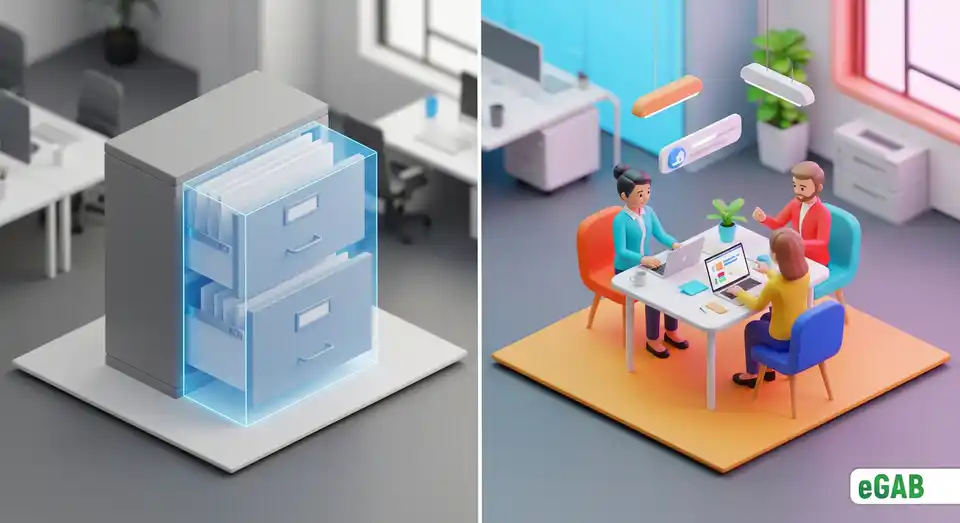
Are Off-Site Storage Facilities a Cheaper Alternative?
So, you've finally realized how much your in-house paper archives are really costing you. What's the next logical step? For many businesses, the first thought is moving everything off-site. But the big question is: is off-site document storage a truly cost-effective solution? On the surface, the numbers look amazing. Professional record centers often charge just $0.50 to $1.25 per box per month . That works out to a mere $6 to $15 per box for a whole year. Now, compare that to the staggering $577 per year it costs to store that same box in your own valuable office space. Just looking at rent, you’re seeing a potential savings of over 95% . This simple in-house vs off-site storage costs comparison makes the choice look like a no-brainer.
The math here is pretty eye-popping. For example, a typical 50-person office produces around 185 boxes of documents each year. Storing that on-site could cost you nearly $48,000 , especially when you account for the space all those filing cabinets take up. Shifting all of that to an off-site facility could slash that cost to just over $1,110 . It seems like an obvious win for your information governance strategy -your company's plan for managing information securely-doesn't it?
Well, not so fast. While that base rate for off-site storage looks tempting, the real costs are often buried. They’re hiding in the various fees tucked inside your service level agreement (the contract that details what you're actually paying for). Need to get a specific document back? That's a retrieval fee, and these off-site record storage fees add up fast. Need to have it re-filed later? That's another fee. Have an urgent request for a critical file for a legal case or an audit? That kind of emergency record retrieval could cost you hundreds of dollars for just one document. Even more important is the steep, indirect cost of lost productivity. When a critical document is miles away, you can't just walk down the hall and grab it. As the experts at ARMA International emphasize, the accessibility and security of records are paramount for running a business. Waiting hours-or even days-for a file to be delivered can bring important projects to a grinding halt, delay critical audits, and seriously disrupt your client service. In the long run, these delays can cost your business far more than what you saved on storage fees.
Quick Insight: Off-site storage simply trades one big, obvious cost (your rent) for a collection of smaller, hidden costs like service fees and productivity delays . While it can be a smart move for deep archives you rarely touch, it's not a complete solution for the active documents your business needs every day.
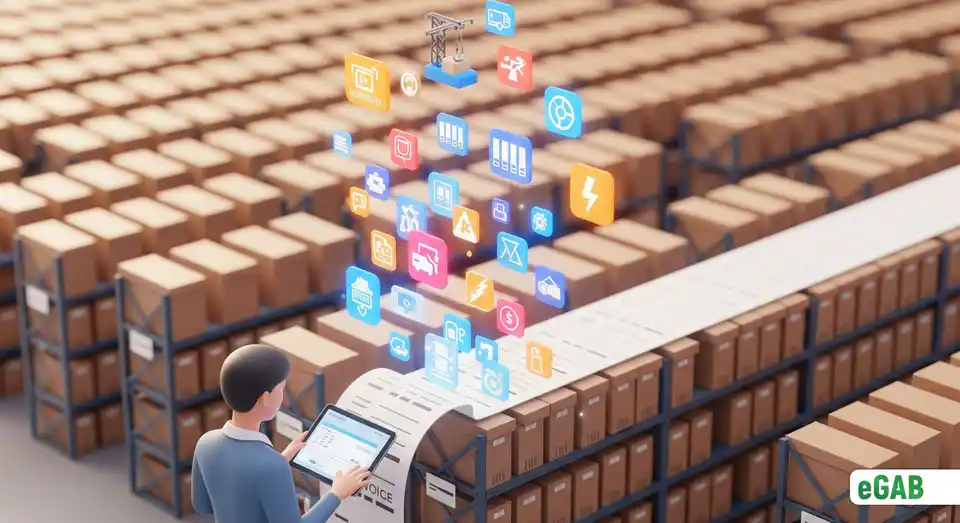
What Are the Hidden Equipment and Supply Costs?
The rent you pay for your filing cabinets? That's just the tip of the iceberg. The entire ecosystem built around paper storage is designed to quietly drain your budget. So, what are the hidden costs of managing paper files? These hidden costs of paper documents pop up in ongoing expenses for equipment, supplies, and even environmental controls. It all starts with a hefty upfront investment. A single, commercial-grade 5-drawer filing cabinet can easily cost you around $350 . And if you need specialized fireproof cabinets for compliance with data retention standards like HIPAA or SOX , you're looking at thousands of dollars for each one.
Then you have the relentless, never-ending need for supplies. Believe it or not, the average office worker used to print a staggering 10,000 sheets of paper every year . This means you're constantly buying more bankers box supplies, folders, labels, printer ink, and toner. For a mid-sized company, this expensive paper habit can easily add up to thousands of dollars a year-a major cost that often gets buried and overlooked in different department budgets.
But it doesn't stop there. After all, paper is fragile. Your important documents need a stable, climate control environment to stop them from getting damaged by mildew, yellowing, and pests. This climate control is essential for their long-term preservation and is often a key requirement for regulatory compliance . That means you're paying to run your HVAC systems 24/7, not for your employees, but just to protect paper. But the biggest hidden expense of all? It's your people's time. But how does storing paper affect employee productivity? Just think about the financial hit when your employees spend even one hour a week filing, searching for, and retrieving documents. This lost time directly torpedoes employee productivity paper filing and translates into tens of thousands of dollars in wasted productivity every single year. Research consistently shows that knowledge workers can spend up to 25% of their time just looking for information , and it's no surprise that disorganized paper systems are a huge reason why. You're essentially paying skilled professionals to be part-time librarians.
Takeaway: The true cost of paper isn't just the cabinet or the ream of paper. It’s a continuous, expensive cycle of buying, printing, organizing, storing, and protecting. It's a system that quietly eats away at your budget, slows your operations, and pulls your team away from their real work.
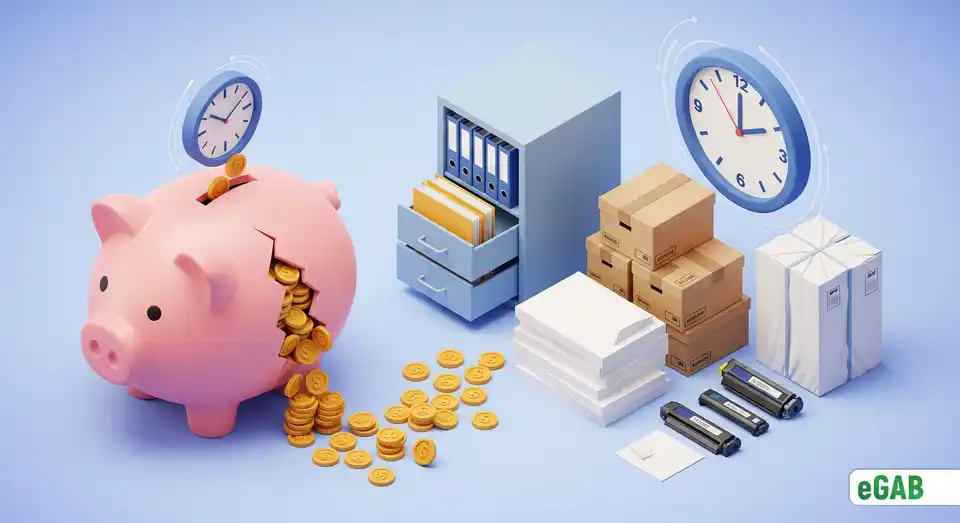
How to Calculate Your Total Annual Cost of Paper Storage
Feeling overwhelmed by all the visible and hidden costs of paper? You don't have to be. So, how much does it really cost to store paper documents? Luckily, a simple four-step calculation can give you a surprisingly accurate picture of the financial burden your paper documents represent. Let's calculate your document storage cost and uncover the true total cost of ownership (TCO) for your paper. Grab a calculator, and let's find out the true cost together.
-
Step 1: Calculate your in-office storage cost. First, let's start with the expensive space you're paying for right now. Multiply the
(Number of filing cabinets)by(15 sq. ft. per cabinet, including access space). Then, take that total and multiply it by(Your office's annual rent cost per sq. ft.). This gives you the direct real estate expense. -
Step 2: Add your off-site storage expenses. Next, if you use an external storage facility, pull out your invoices for the last year. Add up your
(Total annual off-site storage fees). Then, to get the real number, be honest with yourself about how often you need files back and add your(Estimated annual cost for all retrieval, delivery, and service charges). -
Step 3: Sum your equipment and supply costs. Now it's time to tally up a year's worth of purchases for your paper archives. This includes the
(Total amount spent on new filing cabinets, boxes, folders, etc.). You'll also need to add the(Annual cost of paper and printing supplies used just for archiving). -
Step 4: Factor in your labor costs. This final step is often the biggest and most shocking number of all. To figure it out, first multiply the
(Number of employees who handle paper files)by the(Average hours per week they spend on filing/searching). Next, multiply that result by their(Average fully-loaded hourly wage, which includes their salary plus the extra costs of benefits and taxes). Finally, to get the annual total, multiply that by(52 weeks).
When you combine those four figures, you’ll finally see the full financial picture of your document storage costs . For a typical 50-employee company, the numbers can be absolutely staggering. It's not at all unusual for the annual cost of paper document storage and management to soar well past $50,000 . And what about that off-site storage? While that $1,110 line item might seem small at first glance, the added service fees, frustrating retrieval delays, and internal labor costs can quickly cause the total cost of paper management to balloon. This simple exercise reveals just how expensive paper truly is for your business. It also answers the question: why should a business go paperless? The answer is clear: the paperless office cost savings are too significant to ignore.
Next Step: Challenge your team to perform this quick but powerful four-step audit. Presenting that final number-the total, all-in cost of paper-is often the most compelling way to build a solid business case for going paperless . With this data, you can start exploring modern, cost-effective digital solutions-often called a document management system (DMS) -that boost security, enable seamless remote access, and vastly improve disaster recovery (your plan for getting data and systems back after a catastrophe like a fire or flood). This is more than just an upgrade; it's a critical step in your company's digital transformation . So, how do I build a business case for a document management system? You start right here, with these numbers.
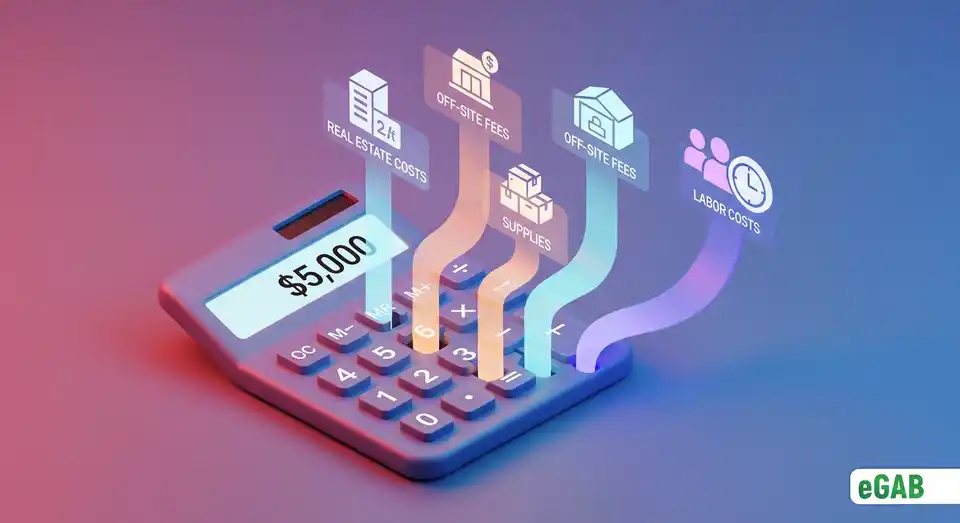
How eGAB Eliminates the Real Estate Footprint of Document Archives
Take a quick look around your office. How much of your expensive commercial real estate is locked up by metal filing cabinets and boxes of old paper? Every square foot you dedicate to storing paper is a square foot you can't use for collaboration, innovation, or activities that actually generate revenue. eGAB empowers you to reclaim that valuable space.
By converting entire rooms of physical archives into secure digital assets , you can repurpose that real estate for what truly matters. You can also completely eliminate the need for costly, climate-controlled, off-site storage facilities, cutting a significant and recurring operational expense right out of your budget.
Best of all, the platform gives you a 100% paperless solution that scales infinitely without demanding any additional physical space . Whether you issue one hundred credentials or one million, your storage footprint remains zero. This directly boosts your bottom line by drastically reducing your dependence on commercial square footage. It’s not just about decluttering; it’s about making a smarter, more strategic use of your most valuable physical assets.
Try This: Calculate the "rent" you're paying for just one filing cabinet. Measure its footprint (don't forget the space needed to open the drawers!), multiply it by your office's cost per square foot, and you'll see the real annual cost of storing paper . That number is a powerful argument for going digital.
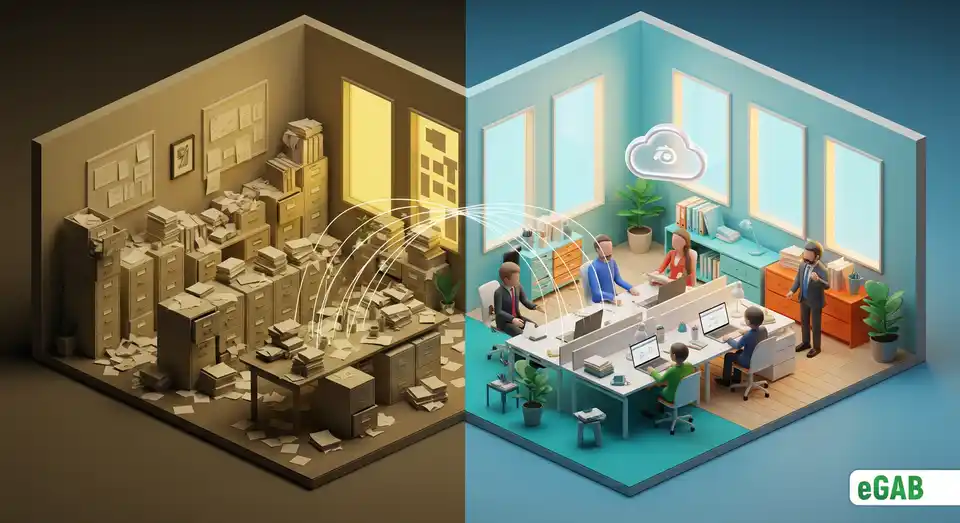
Summary: Exposing the True Financial Drain of Your Filing Cabinets
So, after peeling back the layers, what’s the real story with your company's paper archives? That mountain of paper isn't just a storage problem; it’s a massive, continuous financial drain that quietly wrecks your budget and productivity. It all starts with the most obvious expense: the office space cost for filing cabinets . A single cabinet might seem small, but in reality, it eats up as much as 15 square feet of valuable real estate. A situation like this can cost you over $577 annually in rent alone, turning your prime office space into a pricey, low-value warehouse.
When you try to fix this, you might move documents off-site. But you're often just trading one big cost for a dozen hidden ones. That low monthly per-box fee can look like a huge win, especially in the in-house vs off-site storage costs comparison. The reality, however, is a classic death-by-a-thousand-cuts scenario. You see, every retrieval request, every single re-file, and every urgent demand comes with its own fee. Even worse, think about the frustrating delays. Waiting for critical files to be delivered from miles away can bring your business to a grinding halt, creating a massive efficiency drain that's hard to even measure.
On top of the storage fees, there’s an entire ecosystem of ongoing expenses you need to consider. These are the true hidden costs of paper documents . This includes constantly buying new cabinets, boxes, and supplies. It also includes the energy bills for climate control, which you need to protect fragile paper from inevitable decay. But the single greatest expense of all? It's the wasted, valuable time of your skilled employees. When your team spends precious hours every week just filing, searching, and retrieving paper, their productivity plummets. You are, in effect, paying professionals to be part-time librarians-and that’s a direct and painful hit to your bottom line.
Ultimately, this is where our four-step calculation brings everything into sharp focus. It lets you figure out the true total cost of ownership (TCO) for your entire paper system. What exactly is TCO? It's a financial estimate designed to help you see the direct and indirect costs of any product or system. By simply adding up your expenses-your real estate, off-site fees, supplies, and labor-you can build an undeniable business case for going paperless . Remember, this isn't just about saving money on rent. It's about reclaiming thousands of dollars in lost productivity that you can then reinvest into real business growth. Armed with this final, powerful number, you can confidently justify the move to a modern document management system (DMS) . A DMS is a software system used to track, manage, and store digital documents. This move unlocks significant cost savings and also delivers tangible benefits like enhanced security and vastly improved disaster recovery. The bottom line? It helps you create a more agile, competitive business.
➡️ Let's broaden the perspective. Beyond the costs to your business, there's a cost to the planet. Discover the environmental footprint of a single piece of paper.
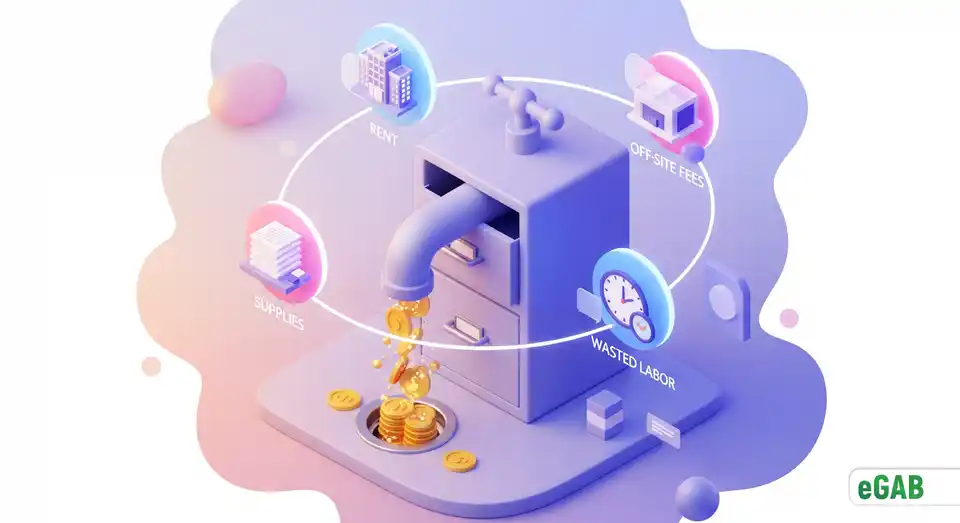
Why Your Paper-Based Office is Failing Your Remote Team
The Environmental Footprint of a Single Paper Document: A 2025 Report
A Practical Guide to Organizing Your Paper Document Archive
Are Your Paper Archives a Legal Time Bomb? Understanding GDPR and Data Retention
The Ultimate Bottleneck: How Paper-Based Processes Are Killing Your Business Automation
